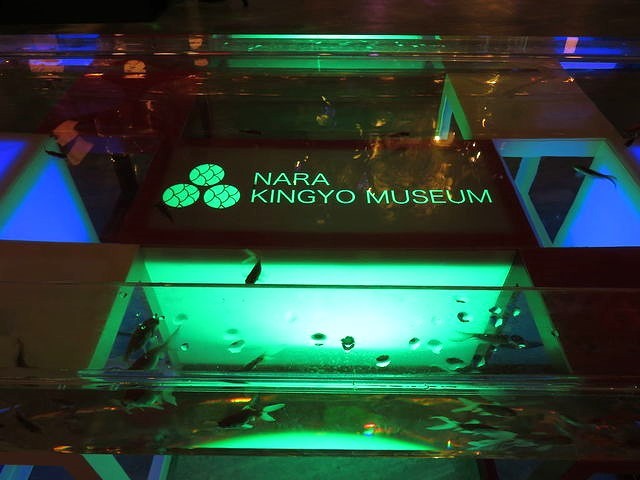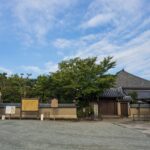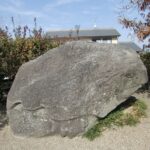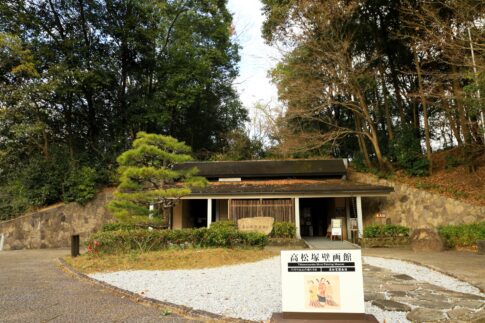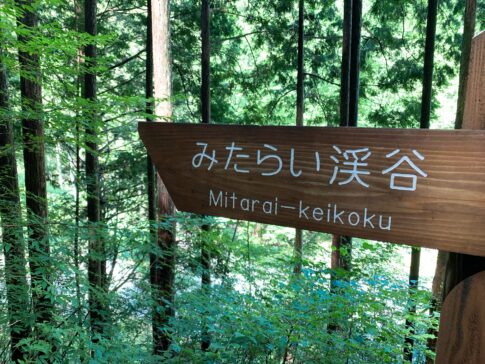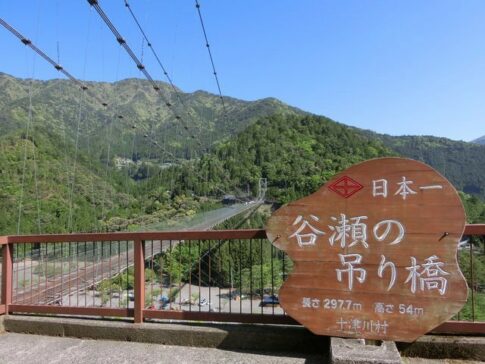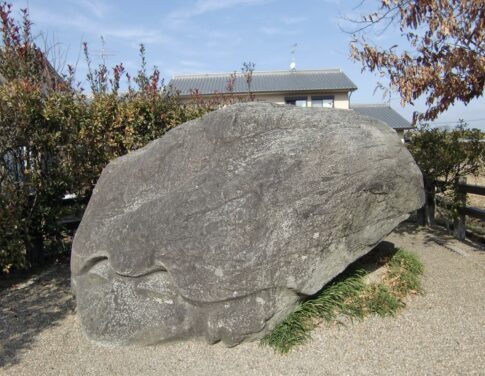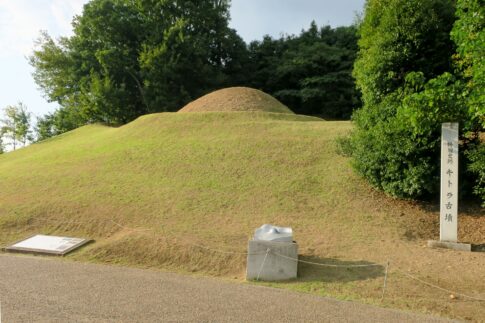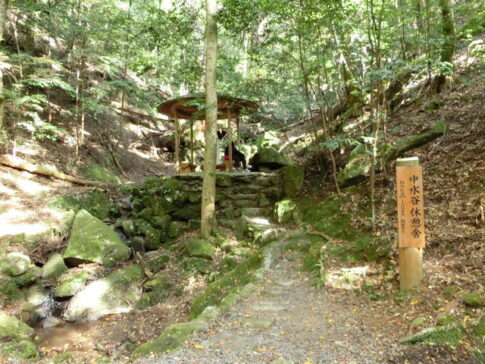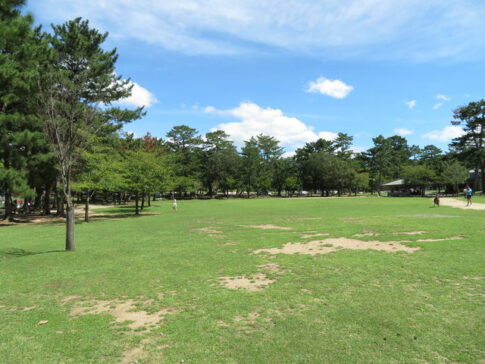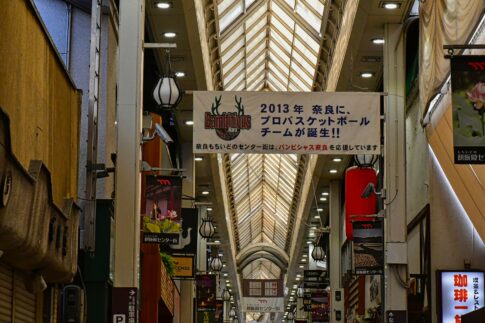Nara Kingyo Museum is a goldfish museum (aquarium) based on the theme of goldfish.
Visitors can see approximately 2,000 goldfish of 38 species in an artistic world view using projection mapping and mirror balls.
It is so exciting place and popular among especially young people.
If you like art or aquarium, you must go there!
What you need to know before visiting Nara Kingyo Museum
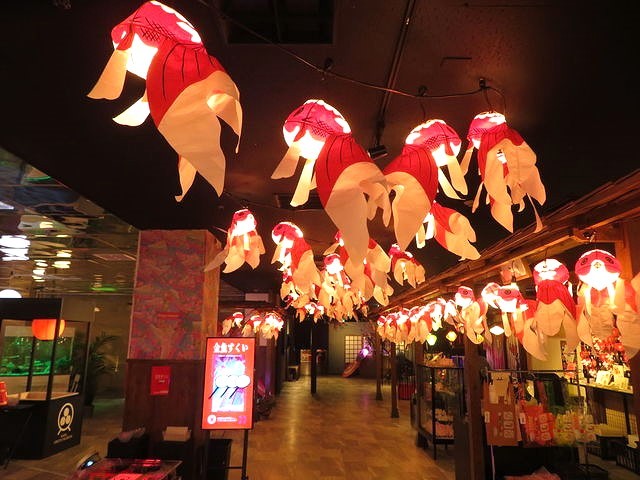
1. Basic Information
One of the largest goldfish museums in Japan was established in Nara Prefecture, one of the three major goldfish producing areas in Japan.
It is more than a “goldfish museum,” it is an “entertainment aquarium,” offering a space of “surprise,” “healing,” and “excitement” to be felt by all five senses.
It is more than a “goldfish museum” but an “entertainment aquarium,” offering a space of “surprise,” “healing,” and “excitement” that can be felt with all five senses.
The “AQUA OASIS” is a fusion of an aquarium and a power spot, creating a mysterious space.
The “JAPANESE AQUARIUM DISCO,” which stimulates and captivates visitors with its unique combination of aquarium and disco with a “Japanese” flavor, has been added to the new floor.
The entire concept is based on “goldfish,” and is expressed by the artists of the moment.
Visitors can enjoy unique experiments such as projection mapping, flowers, terrariums, and mirror balls.
The star of the show are goldfish from Yamato Koriyama City, ranging from familiar varieties to rare species.
They swim gracefully, beautifully, and fluidly.
Everything is an art space, so please bring your camera and enjoy the photos and videos captured from your own perspective.
It is an impressive experience that will stimulate all five senses, unlike any goldfish exhibit you have ever seen.
2. What Kind of Kingyo(Gold Fish) Is There
Nara Kingyo Museum has a huge number of Ryukin.
- What Ryukin is like
The Ryukin is a variety of the Kingyo. It is characterized by a stocky body shape with a strongly rounded abdomen and gracefully elongated tail and fins.
- Outline
The P. kinugioi has a rounded body with a narrow, tall body, elongated fins, and especially long, developed tail fins.
Body coloration includes red, chintz, white, and cherry.
Those with a mixture of red, blue, purple, black, and white are called calico or calico ryukin.
There are two types of tails: three-tailed and four-tailed.
They swim relatively slowly and, like the Wakin, are a popular and highly sought-after species.
The Iida catch from Nagano Prefecture is especially popular because of its deep red coloration.
Its caudal fin is shaped like a fan, giving it the English name “fantail goldfish.
The round-handled Dutch bluefin is an improved version of the mutant Shishigashira ryukin, and is also widely distributed and very popular.
- History
The Dutch Shishigaraki was introduced in China as a result of a mutation of the Wakin, and was fixed by selection of individuals with long tail fins.
It was imported to Satsuma via Ryukyu during the An’ei – Tenmei period of the Edo period.
Therefore, one character of Ryukyu (“Ryu”) is used in the breed name.
3. Highlights of Nara Kingyo Museum
- Entarnace
Entering the entrance, you will find the AQUA OASIS, which is designed in the image of underwater and forest. Chairs and tables are set up so that visitors can watch goldfish while taking a break.
- Kingyo(Goldfish)
There are many rare and large goldfish that you have never seen before, and it is fun just to observe them.
- JAPONE Koji
JAPONE Koji is based on the motif of the streets of Edo period (1603-1868), and visitors can enjoy the Japanese style and goldfish production.
- Deer Zone
A water tank in collaboration with deer, which is typical of Nara, is also available.
- Mirror Ball
The mirror ball and light effects are amazing, and you can experience an artistic world view. It is also perfect for Instagram. Many people were taking pictures with cameras in hand.
- Sparkling display
There are also glittering exhibits like the diamond aquarium and the Brilliant Cut exhibit.
- Flowers and aquarium
Flowers and aquariums laid out on the walls. These are just a few of the exhibits shown on this page. The facility is much larger than expected and is very impressive.
- Photo Spot
Modern and gorgeous, there are also photo spots.
- Trick art is also fun!
The trick art area is a fun photo spot for children and couples. For example, sitting on the goldfish trick art makes it look like you are flying on a goldfish.
- You can also scoop goldfish.
You can also scoop goldfish and balls for a fee of 300 yen per scoop. My child tried to scoop goldfish, but couldn’t do it.
Unfortunately, you can’t take home the goldfish you scooped anyway.
- Lots of goldfish goods
Goods at the Nara Goldfish Museum
In the souvenir corner, postcards, key chains, and other goods are sold. They are very cute. They are perfect for yourself or for souvenirs.
There is also a corner where you can hang ema (votive picture tablet) and omikuji (fortune).
4. Visitor Information
- Address
Mi Nala 4F, 1-3-1 Nijo Oji Minami, Nara City, Nara Prefecture, 630-8012, Japan
The location is in a commercial facility called Mi Nala in Nara City. Located in the center of Nara, it is easily accessible. Convenient for sightseeing.
- Parking lot
There is a large parking lot at Mi Nala. There is a charge, but visitors to the Nara Goldfish Museum can get a free 2-hour ticket. Ask at the reception desk.
- Nearest station
The nearest stations are as follows
6 minutes by Nara Kotsu Bus from Shin-Omiya Station, 15 minutes by Nara Kotsu Bus from Kintetsu Nara Station, and get off at “Miyato Teien” bus stop.
9 minutes by Nara-kotsu bus from JR Nara Station to the “Miyato Teien” bus stop.
Free shuttle bus service is also available from Kintetsu Nara Station, JR Nara Station, and Kintetsu Shin-Omiya Station. For more information, please visit the official Mi Nala website.
- Fees
Adults: 1,200 yen
Elementary school students: 800 yen
Silver (65 years old and over): 800 yen
Disabled: 800 yen (with various types of identification, one caregiver free of charge)
Elementary school students and younger: Free
Fees are subject to change.
Summary
This spot is fun to visit with friends, family or anyone.
When you go to Nara, please go there too!
